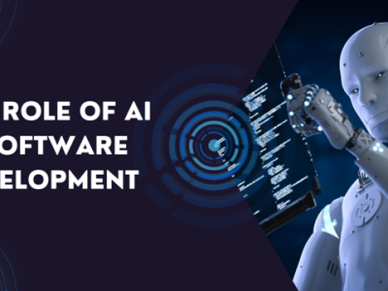
In the fast-moving digital landscape, artificial intelligence (AI) is not just a buzzword but a real game-changer, especially in web development. It brings a promise of smarter, more efficient websites that can adapt in real-time to user needs. From streamlining content management to enhancing customer interactions, AI enables websites to become more dynamic and intuitive.
However, for many small business owners, the thought of implementing AI can seem both exciting and somewhat intimidating due to concerns about costs and technical complexity. We understand that every dollar and minute counts when you’re running a small business. That’s why we’re focusing on simple, budget-friendly ways to tap into AI.
You don’t need deep pockets or a team of tech wizards; just a willingness to explore how AI can work for you. Whether it’s automating mundane tasks or delivering personalized user experiences, AI has immense potential to elevate your web presence. In fact, a recent survey found that 83% of small business owners who adopted AI reported significant improvements in operational systems and efficiency.
Understanding the Basics of AI in Web Development
Artificial intelligence (AI) is transforming web development into a more intuitive and efficient process, where websites can learn from and adapt to user interactions in real-time.
At its core, AI involves using algorithms and machine learning to mimic human intelligence, making digital experiences richer and more responsive. AI technology in web development can significantly enhance user experience by personalizing content, automating responses, and optimizing site navigation based on user behavior.
Cost-Effective AI Tools for Small Businesses
For small businesses, the prospect of integrating AI into web development can feel overwhelming, especially when budgets are tight. Fortunately, there are numerous cost-effective AI tools available that make it possible to harness the power of AI without significant investment.
Chatbots: Tools like ManyChat and Chatfuel offer cost-effective AI-driven chatbot solutions that enhance customer interaction and support. These platforms enable businesses to create personalized chat experiences that handle inquiries, process orders, and provide information around the clock, without the need for a full-time staff member.
Analytics: Google Analytics is a powerful, budget-friendly tool that uses AI to provide deep insights into user behavior. Understanding how visitors interact with your website allows for data-driven decisions to improve user experience and boost conversions.
Design: For design needs, Wix ADI (Artificial Design Intelligence) can automatically create stunning websites by analyzing your content and preferences, making it an ideal option for small businesses without in-house design expertise.
AI Website Builders: AI-powered website builders make it easy to create professional, visually appealing websites by analyzing your content and preferences. These tools are particularly valuable for small businesses without in-house design expertise, offering a quick and cost-effective way to establish a strong online presence.
Leveraging Free and Open-Source AI Resources
One of the most accessible ways to integrate AI into web development is by utilizing free and open-source resources. These tools offer robust AI capabilities without the hefty price tag, making them perfect for small businesses with limited budgets.
Machine Learning Libraries: TensorFlow and Keras are popular open-source libraries that enable developers to build and train machine learning models. These can be used to develop AI-driven features such as recommendation systems and predictive analytics tailored to your business’s unique needs.
APIs: IBM Watson provides free APIs that allow businesses to add AI functionalities like natural language processing and visual recognition to their websites. With minimal coding required, these tools can significantly enhance your website’s interactivity and responsiveness.
To get the most out of these resources, start small by focusing on one or two areas where AI can have the most significant impact. Experiment with different tools, learn from the results, and gradually expand your use of AI as you gain more confidence and understanding of its potential.
How to Integrate AI Gradually?
Adopting AI doesn’t require an all-at-once approach. Small businesses can benefit from a gradual integration strategy that allows them to test the waters before fully committing to more extensive AI implementations.
Start Small: Identify areas where AI can have an immediate impact with minimal disruption, such as implementing an AI-powered chatbot on your customer service page. This can quickly improve response times and customer satisfaction without a complete overhaul of your existing processes.
Prioritize High-ROI Projects: Focus on AI projects that offer the greatest benefits relative to their cost, such as AI-driven analytics providing actionable insights into customer behavior.
Expand Gradually: As you become more comfortable with AI, gradually extend its use into other areas of web development, including automating content updates, enhancing SEO efforts, or integrating AI-based security measures to protect your website.
When to Consider Custom AI Solutions
For some small businesses, off-the-shelf AI tools might not meet all their specific needs, especially when unique features or specialized functions are required. In such cases, investing in AI development services can be a game-changing strategy.
- Unique Business Needs: If your business operates in a niche market or requires highly specialized interactions, custom AI can provide tailored solutions that enhance your specific processes.
- Scalability Concerns: As your business grows, custom AI solutions can adapt and scale accordingly, something that off-the-shelf tools might not handle well.
- Integration Complexities: If you have existing systems that need to seamlessly integrate with AI capabilities, custom solutions can be designed to fit into your current infrastructure without disrupting operations.
Overcoming Challenges in AI Adoption for SMBs
While AI offers significant advantages, small businesses often encounter a few key challenges when attempting to integrate these technologies into their operations.
Cost Constraints: Even with affordable tools, advanced or custom AI solutions can require substantial investment. Beyond the initial purchase, ongoing costs for maintenance, upgrades, and employee training can add up.
Technical Expertise: Implementing AI, particularly in web development, often requires technical skills that small businesses may lack in-house. This can necessitate hiring external experts, increasing both costs and dependency on third parties.
Data Privacy and Security: AI systems rely on large datasets, which must be managed responsibly to ensure privacy and security. This is especially crucial for businesses handling personal customer data, where any breach could lead to legal and reputational damage.
Employee Resistance: Introducing AI can cause anxiety among employees who fear job displacement. It’s important to address these concerns by emphasizing that AI is meant to enhance their roles, making tasks easier and allowing them to focus on more meaningful work.
Uncertain ROI: Measuring the return on investment for AI can be challenging, particularly in the early stages of adoption. Small businesses may struggle to see immediate impacts, leading to hesitation in fully embracing AI technologies despite their long-term benefits.
Final Thoughts
By taking a strategic approach—starting with cost-effective tools, leveraging free resources, and gradually integrating AI into different aspects of their operations—small businesses can overcome these challenges.
While the road to AI adoption may have its hurdles, the potential rewards make it a journey worth embarking on. With careful planning, a focus on incremental integration, and a willingness to adapt, small businesses can successfully leverage AI to create smarter, more responsive websites that serve both their needs and those of their customers.
















Leave a Reply